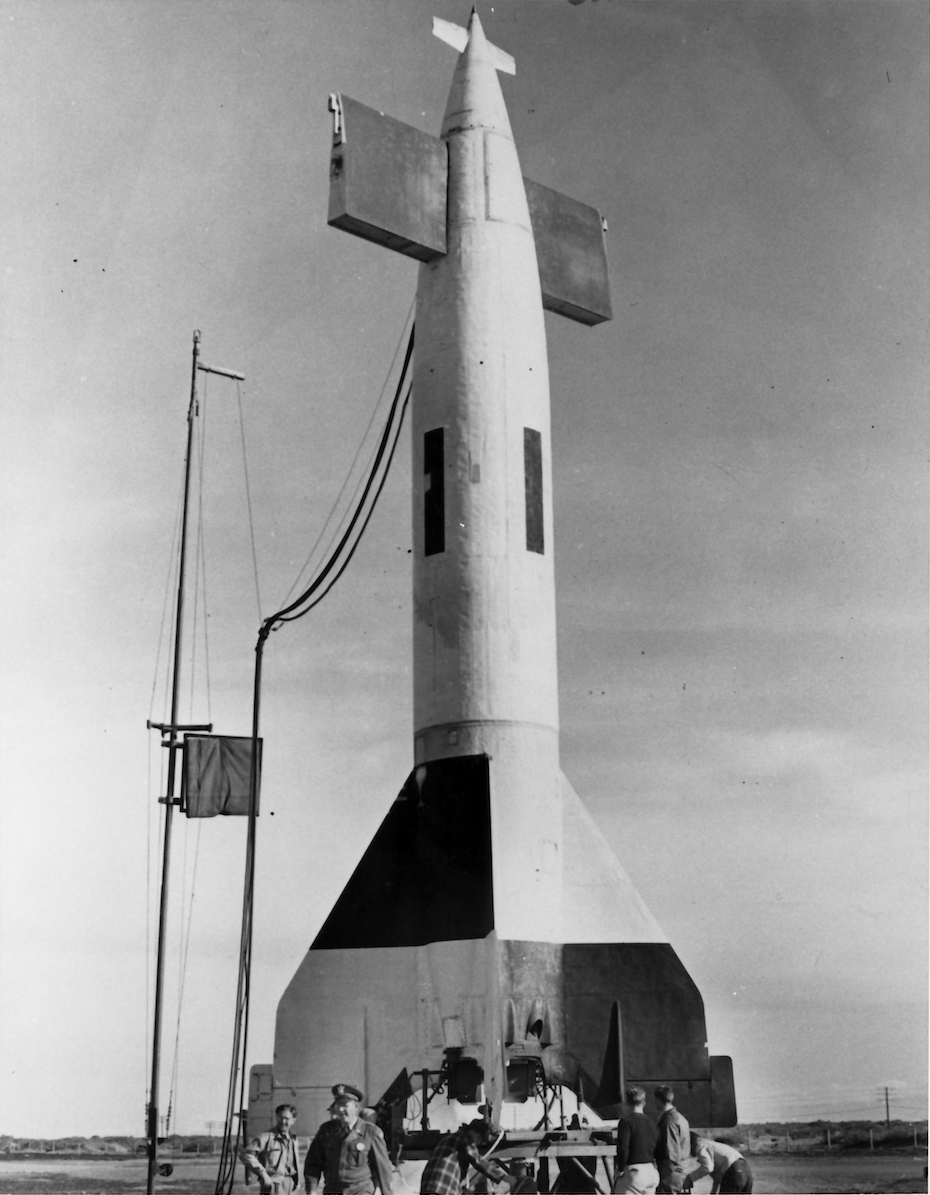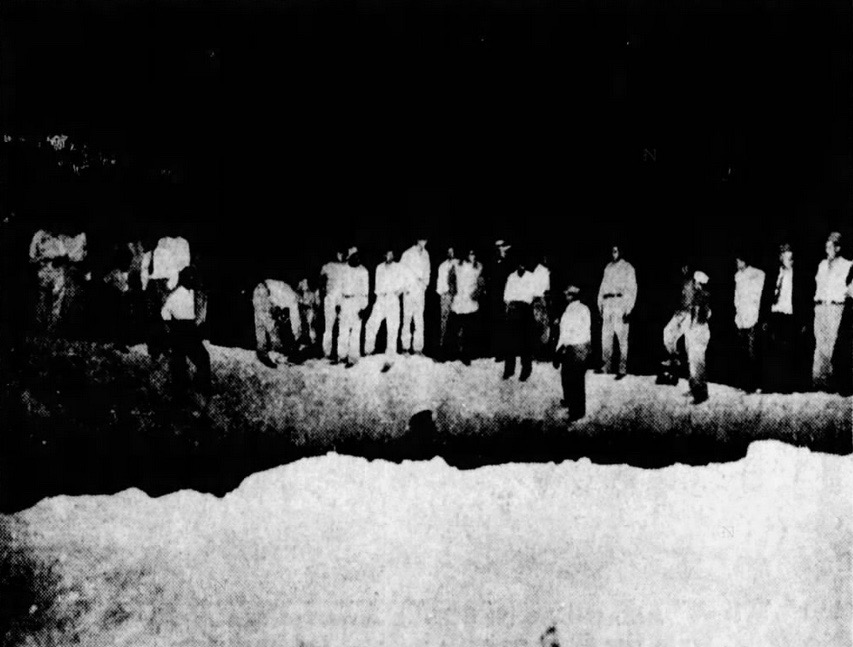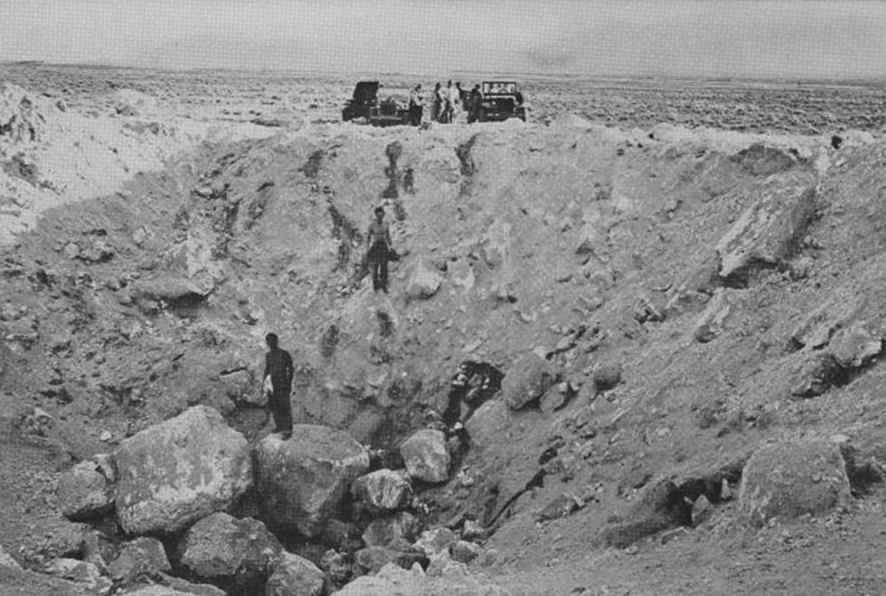
24 October 1946: At 12:18 p.m., Mountain Standard Time (17:18 UTC), a captured V-2 rocket was launched from the U.S. Army’s White Sands Missile Range, east of Las Cruces, New Mexico. The rocket, identified as Upper Air Rocket Number 13, carried a 35-millimeter DeVry Corporation cine camera set to expose one frame every second-and-a-half.
The V-2’s engine burned for 59.8 seconds, by which time the rocket had reached an altitude of 17.0 miles (27.4 kilometers) and a velocity of 3,990 feet per second (1,216 meters per second). Continuing upward on a ballistic trajectory, the rocket reached a maximum altitude of 65.0 miles (104.6 kilometers) after 180.0 seconds. This is just above the 100-kilometer Kármán Line which is the arbitrary beginning of Space.
Falling back to Earth, Number 13 impacted approximately 17 miles north-northwest of the White Sands V-2 Launching Site and was completely destroyed. Although debris from the rocket was scattered widely, the film cassette was recovered.
The image above is a still frame from the recovered film. It shows the curvature of the Earth. This was the highest altitude a photograph had been made since Captain Albert W. Stevens photographed the Earth from a balloon, Explorer II, 20 July 1935.
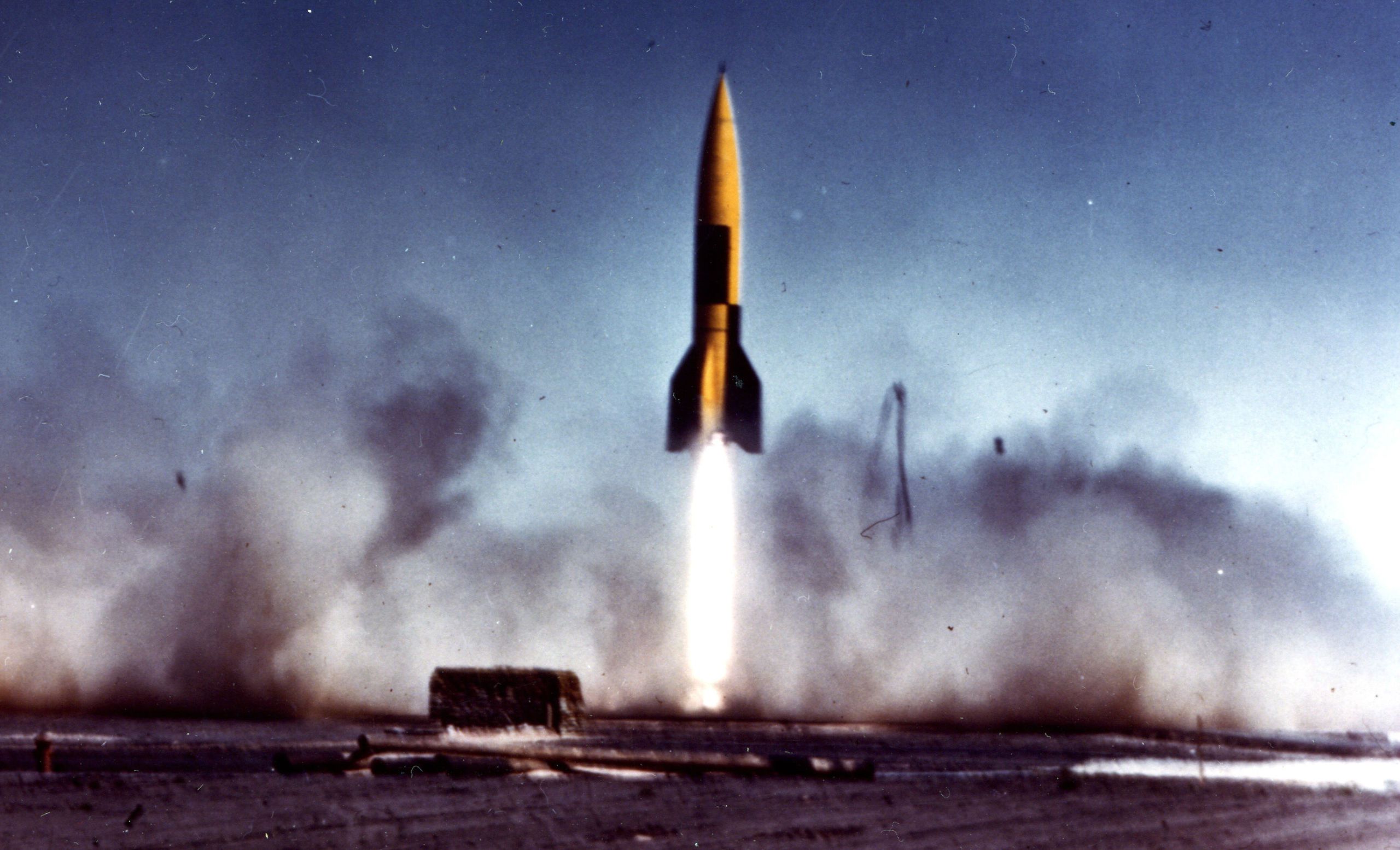
The V2, or Vergeltungswaffen 2 (also known as the A4, or Aggregat 4) was a ballistic missile with an empty weight of approximately 10,000 pounds (4,536 kilograms) and weighing 28,000 pounds (12,700 kilograms), fully loaded. It carried a 738 kilogram (1,627 pound) (sources vary) explosive warhead of amatol, a mixture of ammonium nitrate and TNT. The propellant was a 75/25 mixture of ethanol and water with liquid oxygen as an oxidizer.
The complete rocket was 14.036 meters (46.050 feet) long, and had a maximum diameter of 1.651 meters (5.417 feet). The rocket was stabilized by four large fins, 3.945 meters (12.943 feet) long, with a maximum span of 3.564 meters (11.693 feet). The leading edge of these fins was swept aft 60° to the “shoulder,” and then to 87° (30° and 3°, relative to the rocket’s centerline). A small guide vane was at the outer tip of each fin, and other vanes were placed in the engine’s exhaust plume.
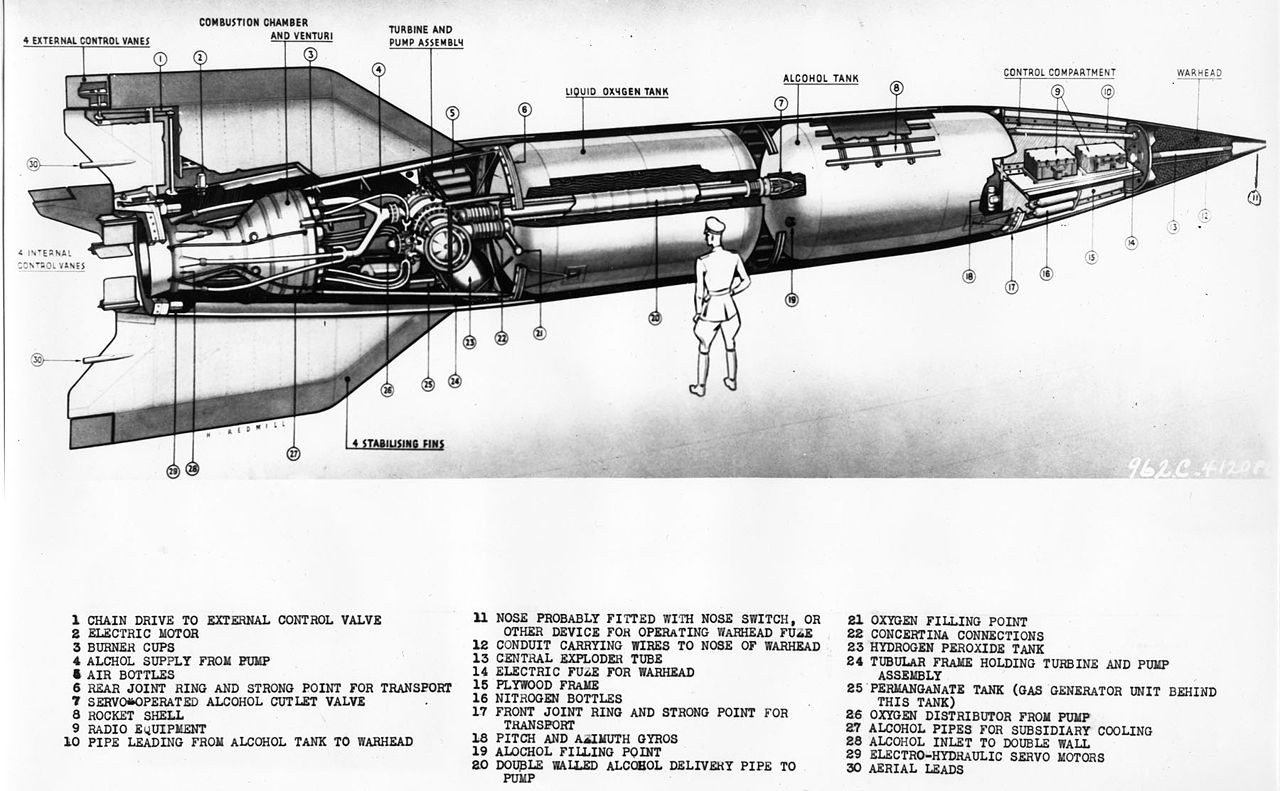
When launched, the rocket engine burned for 65 seconds, accelerating the rocket to 3,580 miles per hour (5,760 kilometers per hour) on a ballistic trajectory. The maximum range of the rocket was 200 miles (320 kilometers) with a peak altitude between 88 and 128 miles, depending on the desired range. On impact, the rocket was falling at 1,790 miles per hour (2,880 kilometers per hour), about Mach 2.35, so its approach would have been completely silent in the target area.
The V-2 could only hit a general area and was not militarily effective. Germany used it against England, France, The Netherlands and Belgium as a terror weapon. More than 3,200 V-2 rockets were launched against these countries.
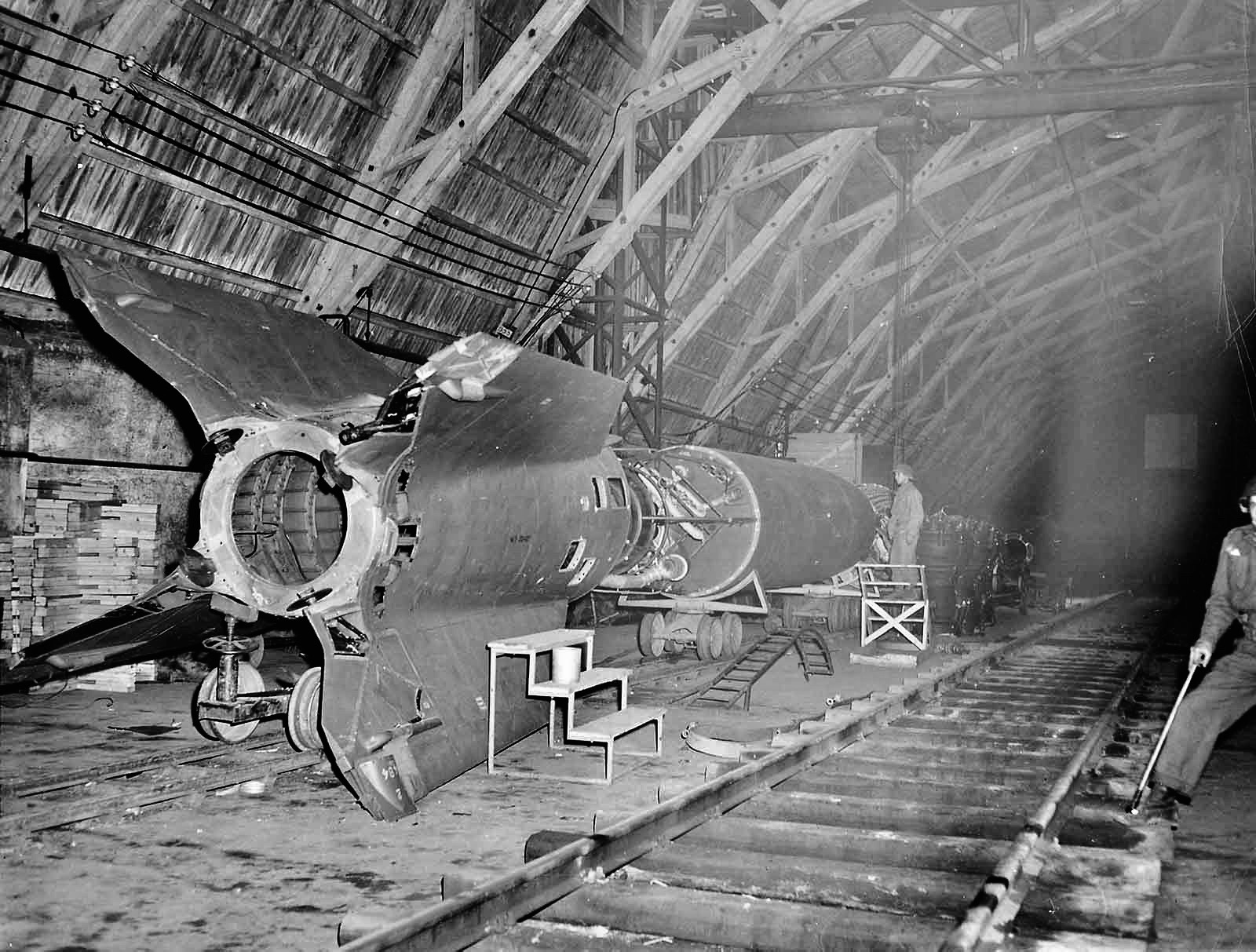
As World War II came to and end, the Allies captured many partially-completed missiles, as well as components and parts. Sufficient parts and materiel and been transferred from Germany to construct more than one hundred V-2 rockets for testing at White Sands. No missiles were received in flyable condition. Over a five year period, there were 67 successful launches, but it is considered that as much knowledge was gained from failures as successes.
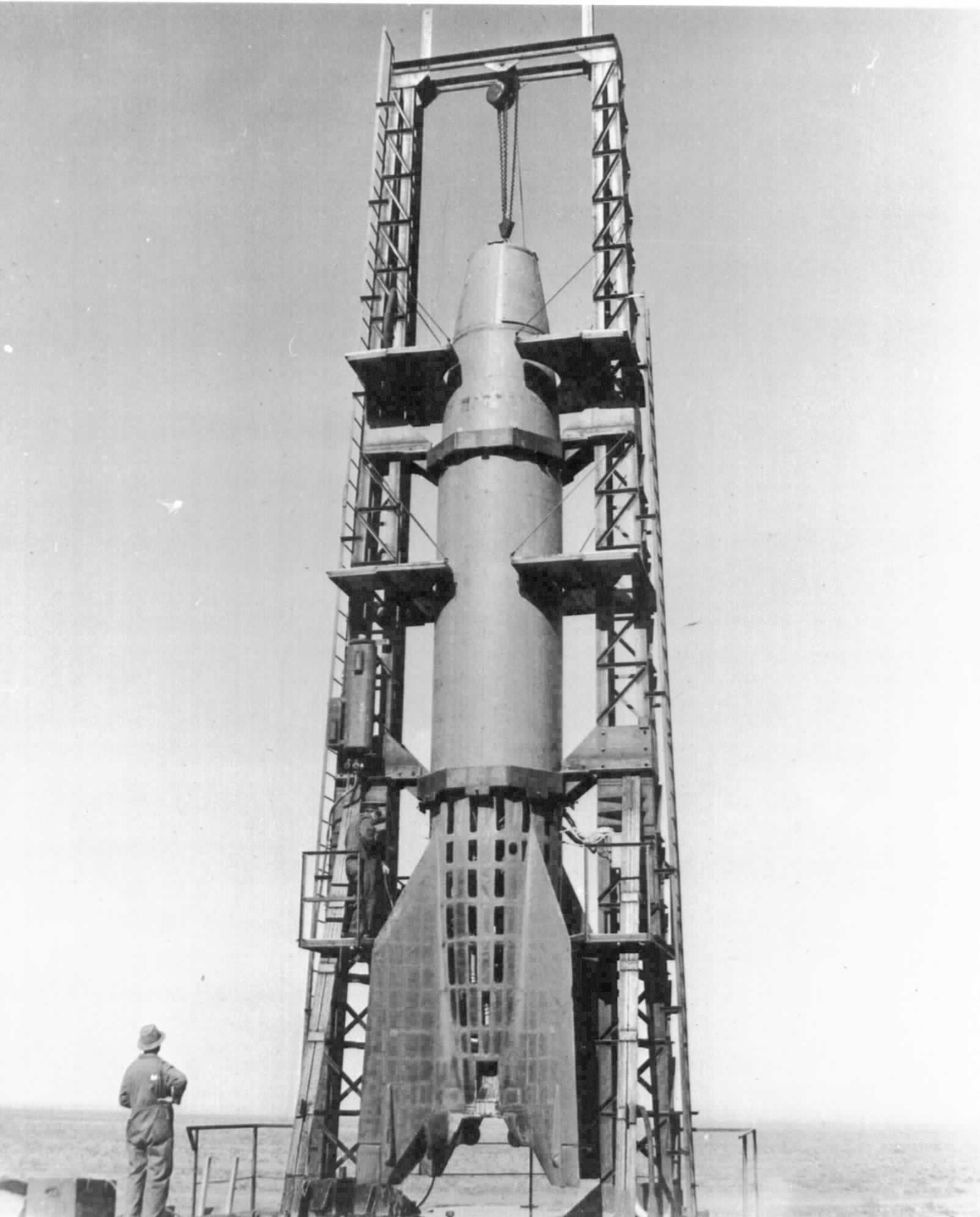
Along with the rockets, many German engineers and scientists surrendered or were captured by the Allies. Under Operation Paperclip, Wernher von Braun and many other scientists, engineers and technicians were brought to the United States to work with the U.S. Army’s ballistic missile program at Fort Bliss, Texas, White Sands Proving Grounds, New Mexico, and the Redstone Arsenal, Huntsville, Alabama.
Tests of the V-2 rockets led to the development of U.S. rockets for the military and NASA’s space program.
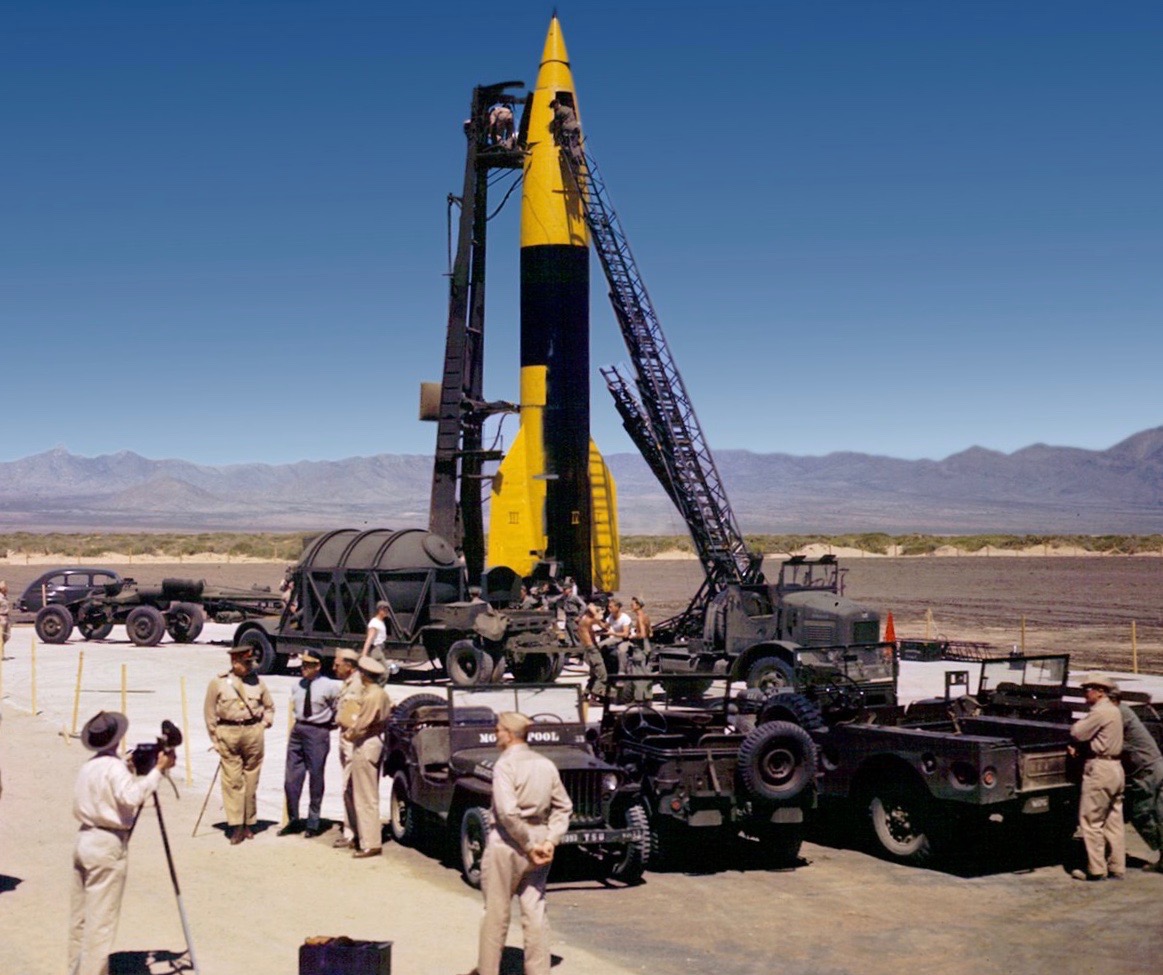
¹ V-2 Number 13 had an unfueled weight of, 9,070 pounds (4,114 kilograms); fully fueled, it weighed 28,277 pounds (12,826 kilograms).
© 2019, Bryan R. Swopes
